15 Fall Gardening Tips for Small Spaces and Patios
Gardening in small spaces and on patios can be a challenge, especially during the fall when temperatures start to drop. However, with the right planning and a few smart tips, you can still enjoy a vibrant garden. By choosing the right plants and utilizing clever techniques, you can make the most of your limited space. Whether you’re looking to grow fall vegetables, flowers, or even fruits, there are plenty of options for small gardens. Simple strategies like container gardening, vertical gardening, and selecting cold-hardy plants can help you extend your growing season.
This post may contain affiliate links, which helps keep this content free. Please read our disclosure for more info.
Choose Compact Plants
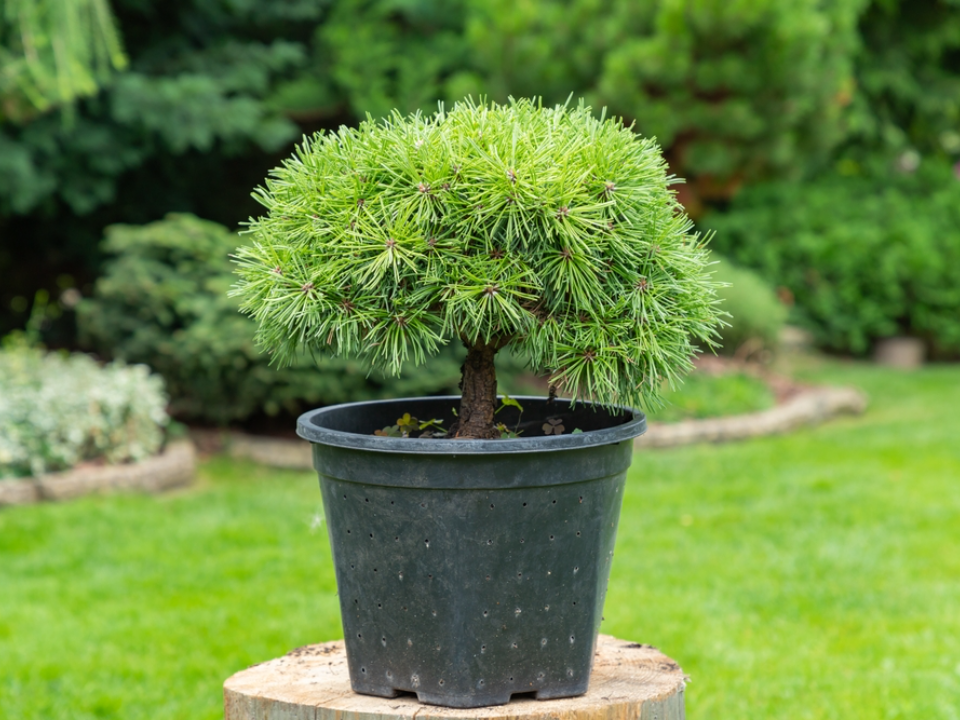
When gardening in small spaces or on patios, it is essential to select compact plants that do not require a lot of room to grow. Many plants have varieties that are bred specifically for smaller areas. These compact plants typically maintain a smaller size while still providing the same beautiful blooms and foliage as their larger counterparts.
Opting for smaller plants helps you maximize your space while still creating a vibrant garden. Consider plants like dwarf shrubs, mini vegetables, or compact flowers. These plants will not overwhelm your space and are ideal for confined areas where you want a lush garden without taking up too much room.
Use Vertical Gardening
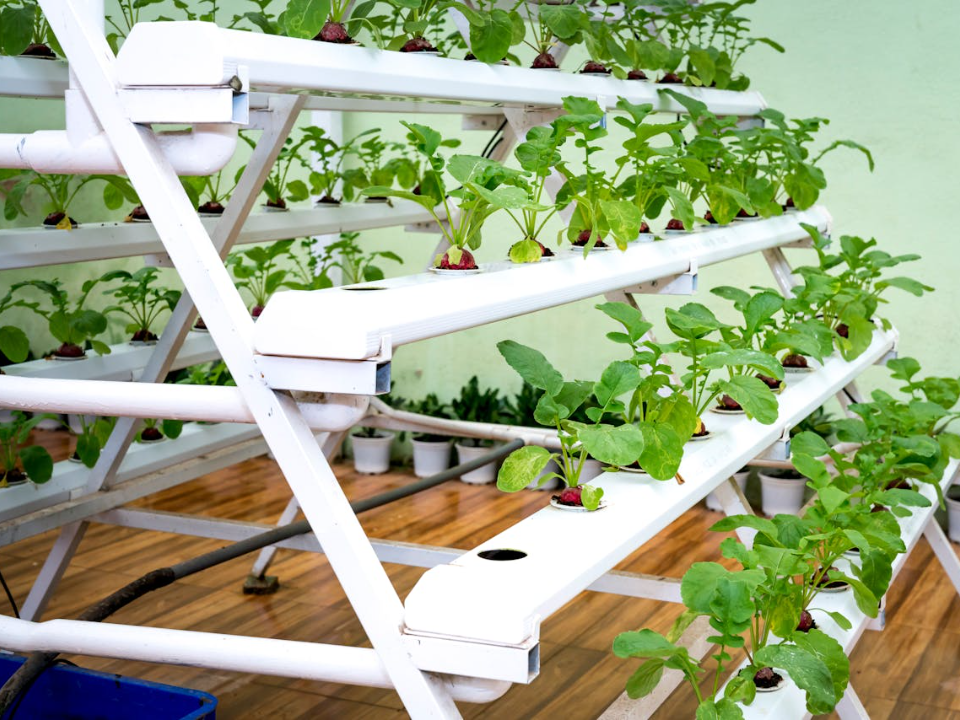
Vertical gardening is a clever way to make use of your limited space by growing plants upwards rather than outwards. You can use trellises, plant towers, or wall planters to grow climbing plants such as peas, beans, or climbing flowers like sweet peas and morning glories.
By growing vertically, you free up valuable floor space, allowing you to fit more plants in your garden. Vertical gardening can also add a striking aesthetic element, as plants grow upwards, creating a natural wall of greenery that enhances the overall appearance of your space.
Add Fall Herbs
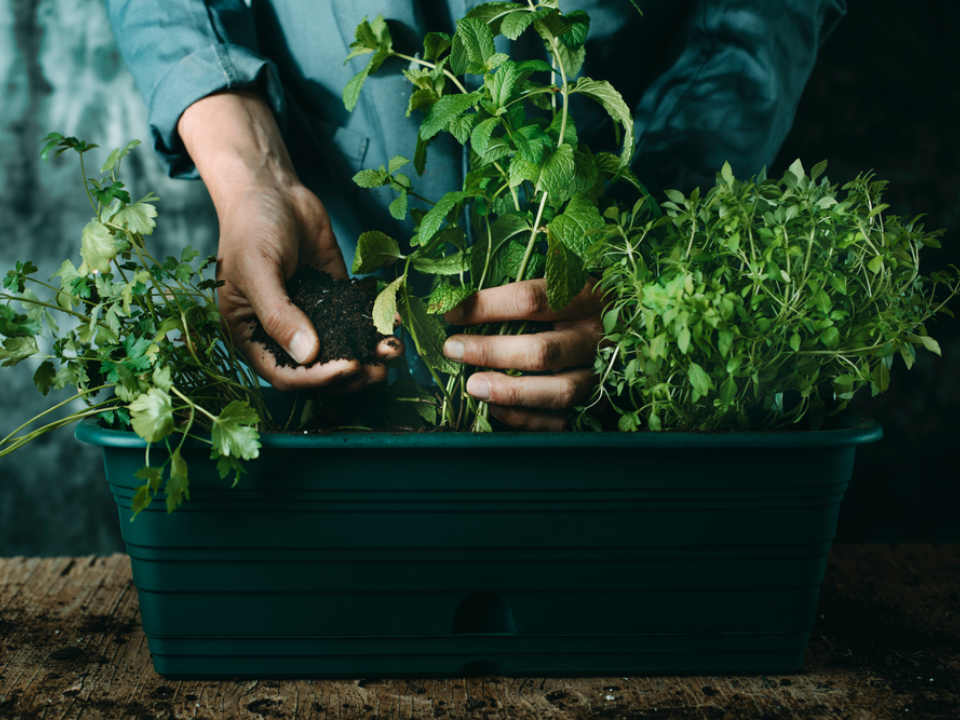
Many herbs thrive in cooler fall weather, making them perfect for small patio gardens. Herbs like thyme, rosemary, parsley, and cilantro can grow well in containers and provide you with fresh, aromatic additions to your meals throughout the fall season.
When planting herbs in small spaces, use pots or hanging baskets that can be placed in sunny spots. These plants need little care and can even be grown indoors if the space allows, making them versatile for both patios and indoor gardens.
Grow Fall-Resistant Vegetables
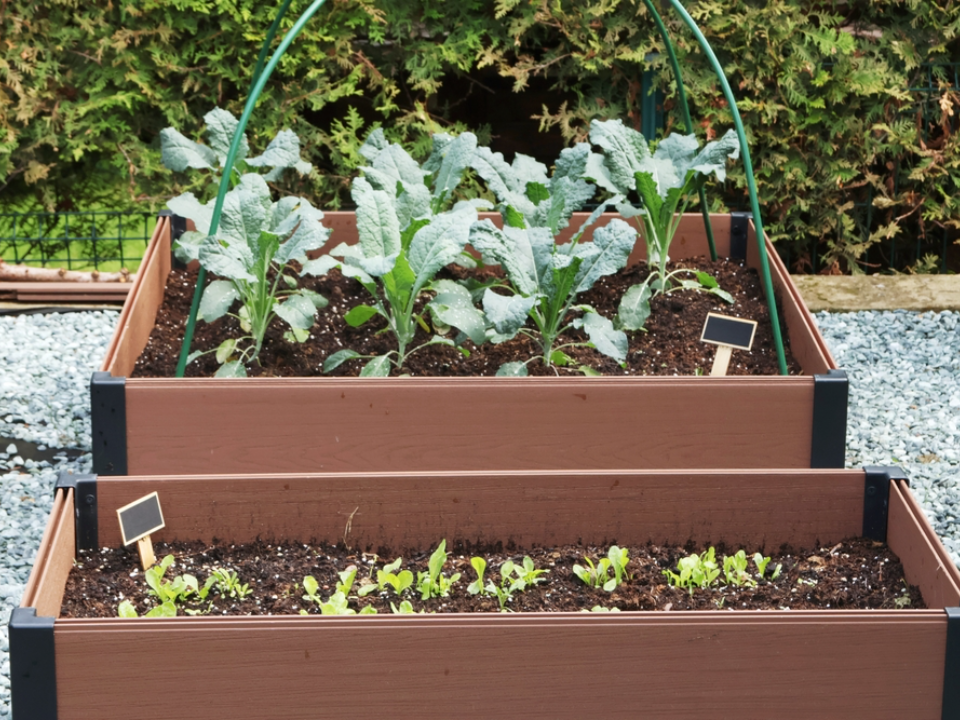
For small gardens, growing vegetables that are resilient to cooler fall temperatures is a great option. Crops such as kale, spinach, and root vegetables like carrots and beets can continue to thrive as the weather cools.
These vegetables can be grown in containers or raised beds, and their growth is slowed down as temperatures drop, which allows them to be harvested even later in the season. Choose varieties that are bred to withstand the cooler months, so you can enjoy fresh produce well into fall.
Maximize Container Gardening
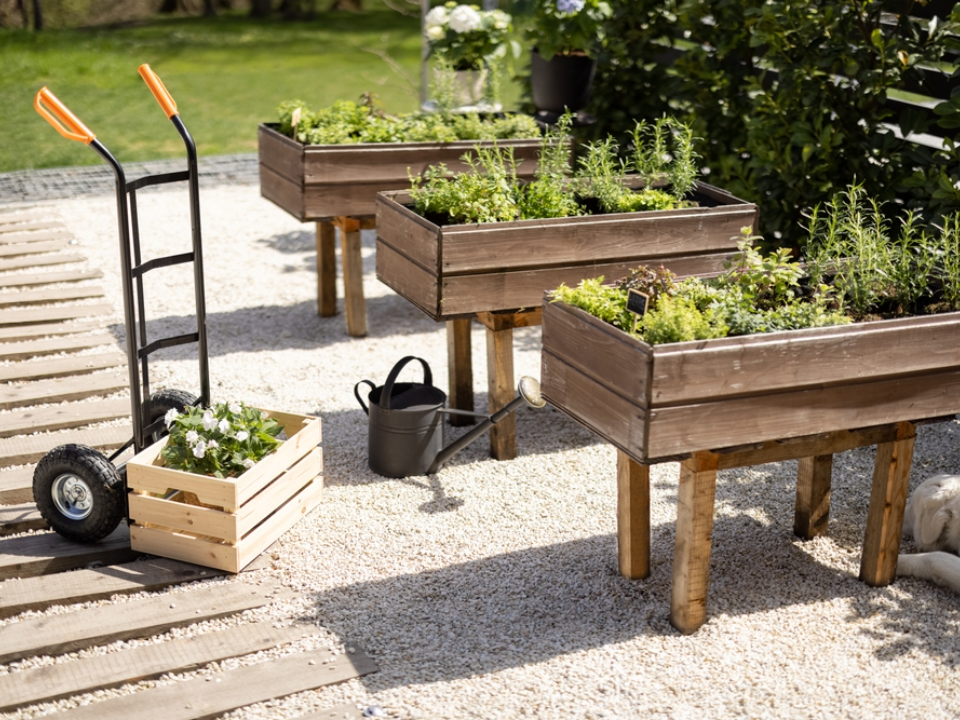
Container gardening is one of the most practical solutions for small patios or apartments. Almost any plant can be grown in a container, from flowers to herbs, vegetables, and even small fruit trees. Containers come in various sizes, allowing you to choose the right one depending on the plant’s needs.
Using pots and containers provides flexibility in arranging your plants and even allows you to move them as needed to optimize sunlight or protect them from frost. Additionally, containers help prevent root-bound plants and ensure proper drainage, which is important for maintaining healthy plants in small spaces.
Plant Fall Flowers
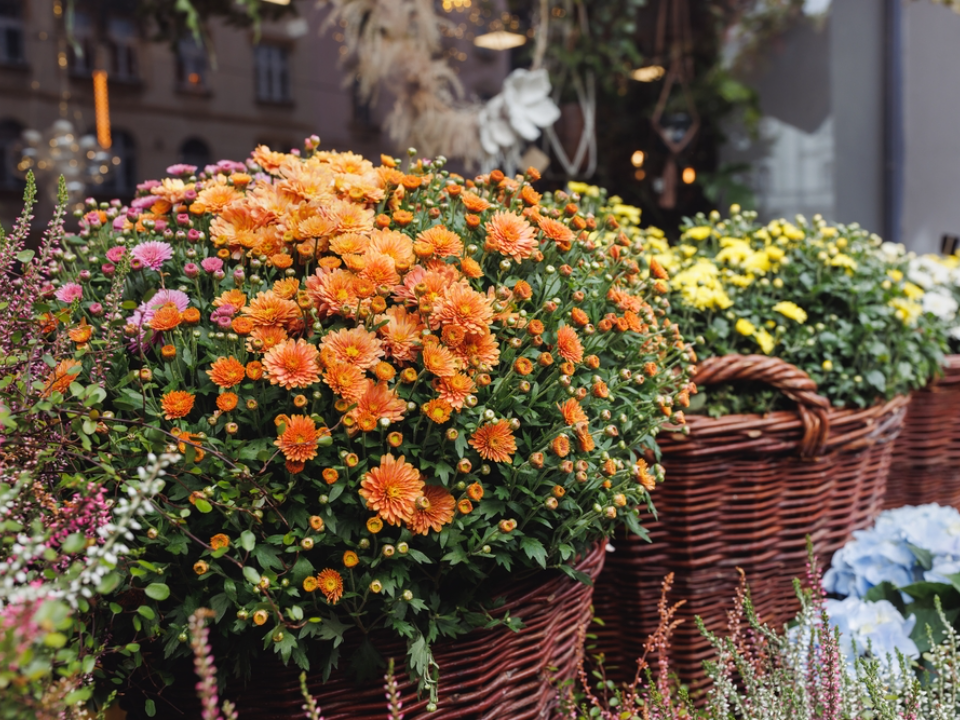
Fall flowers can bring vibrant color and life to your garden as the weather starts to cool down. Plants like mums, asters, and pansies bloom beautifully in the fall and can be grown in containers, window boxes, or hanging baskets. These flowers not only add color but also provide food for pollinators like bees and butterflies.
By selecting fall-blooming flowers, you extend the beauty of your garden into the cooler months. Mums and asters, for example, are hardy and can tolerate frost, making them perfect for late-season gardening. Arrange them in strategic locations for a pop of color in your small space.
Incorporate Succulents
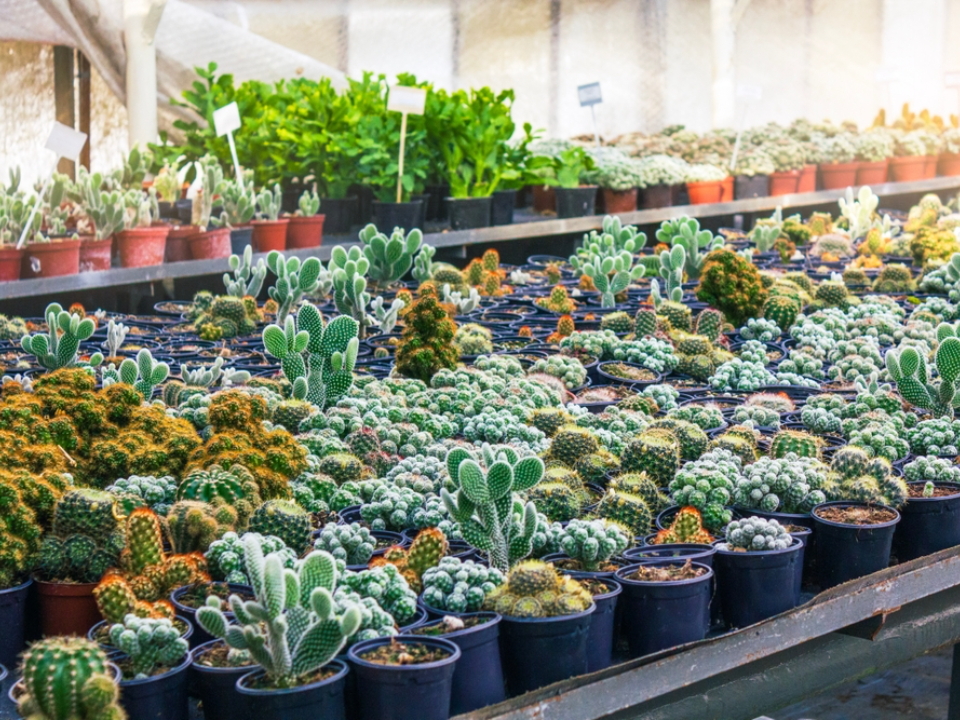
Succulents are low-maintenance plants that thrive in small spaces and are perfect for fall gardening. Their ability to store water makes them ideal for patios where you might not have access to regular watering. Choose a variety of succulents like sedum, echeveria, and aloe vera that can survive cooler temperatures.
These plants are also incredibly versatile, and they can be placed in creative containers, including unique pots, teacups, or even old boots, adding character to your space. With their striking shapes and colors, succulents create visual interest while being easy to care for.
Try Indoor Plants for Extended Growth
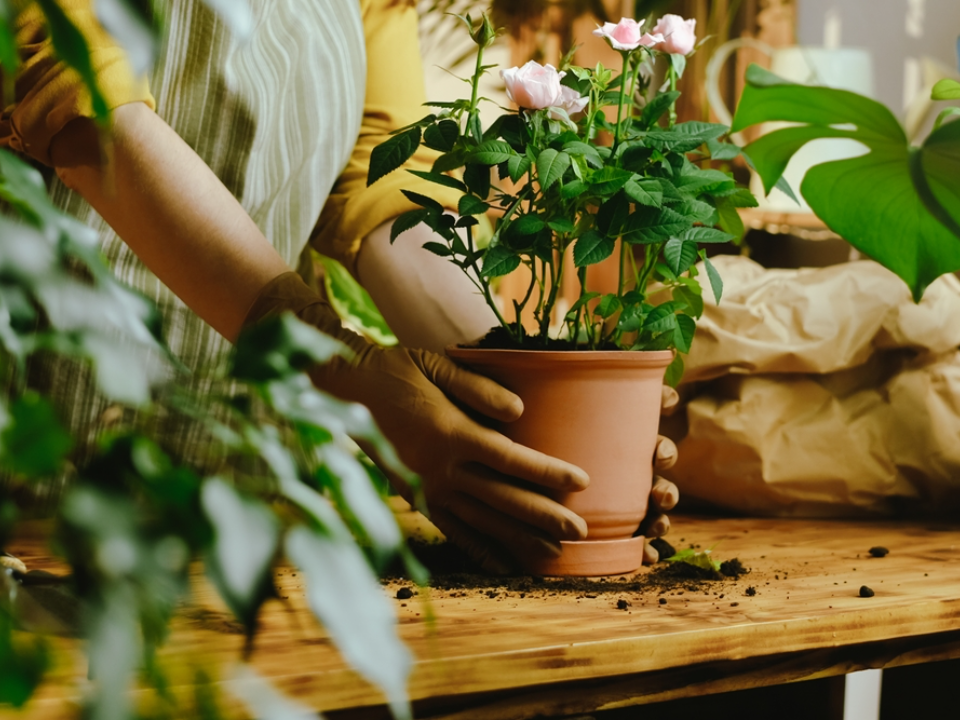
If your outdoor space is limited or affected by the cooler weather, consider moving some plants indoors for extended growth. Many plants, such as herbs, leafy greens, and even small flowering plants, thrive in indoor environments with proper lighting and care. You can place them in front of a sunny window or use grow lights to ensure they get the necessary light during the shorter fall days.
Indoor gardening offers the flexibility of year-round growth, allowing you to enjoy fresh plants even in the fall and winter months. With a little attention to humidity and watering, your indoor garden can flourish throughout the colder seasons.
Fall-friendly fertilizers
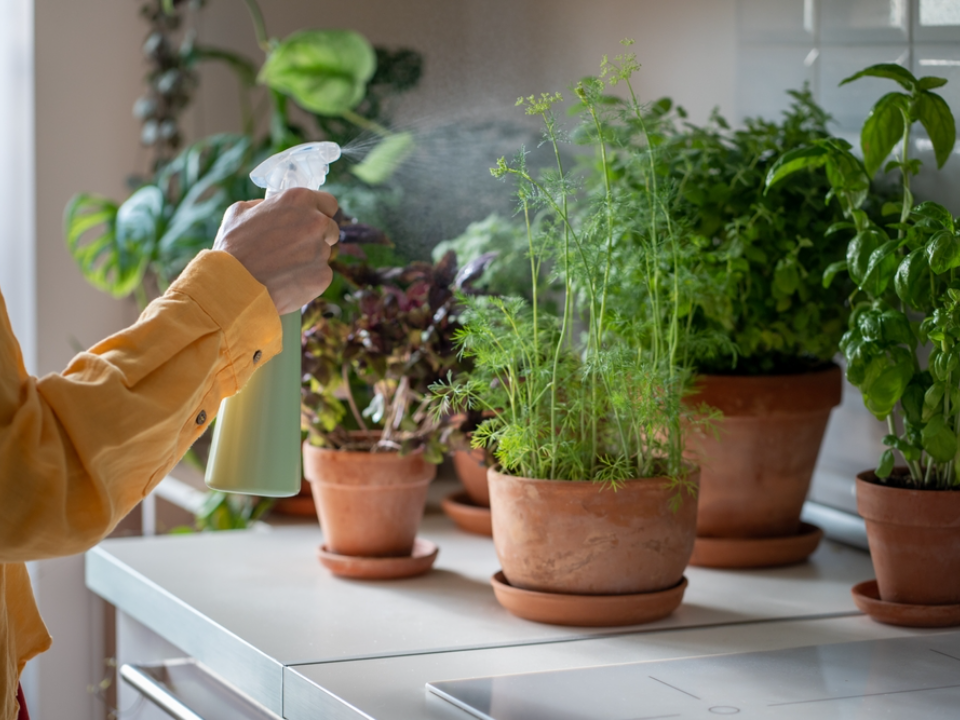
Fall is the perfect time to give your plants the extra nutrients they need to make it through the colder months. Fall-friendly fertilizers often contain a higher ratio of potassium and phosphorus, which support root development and overall plant health. This helps plants prepare for winter dormancy while encouraging strong growth.
When using fertilizers in small garden spaces, be mindful of the specific needs of each plant. For example, vegetables and flowers may have different nutritional requirements, so it is important to choose the right type of fertilizer for each type of plant.
Mulch for Insulation and Moisture Retention
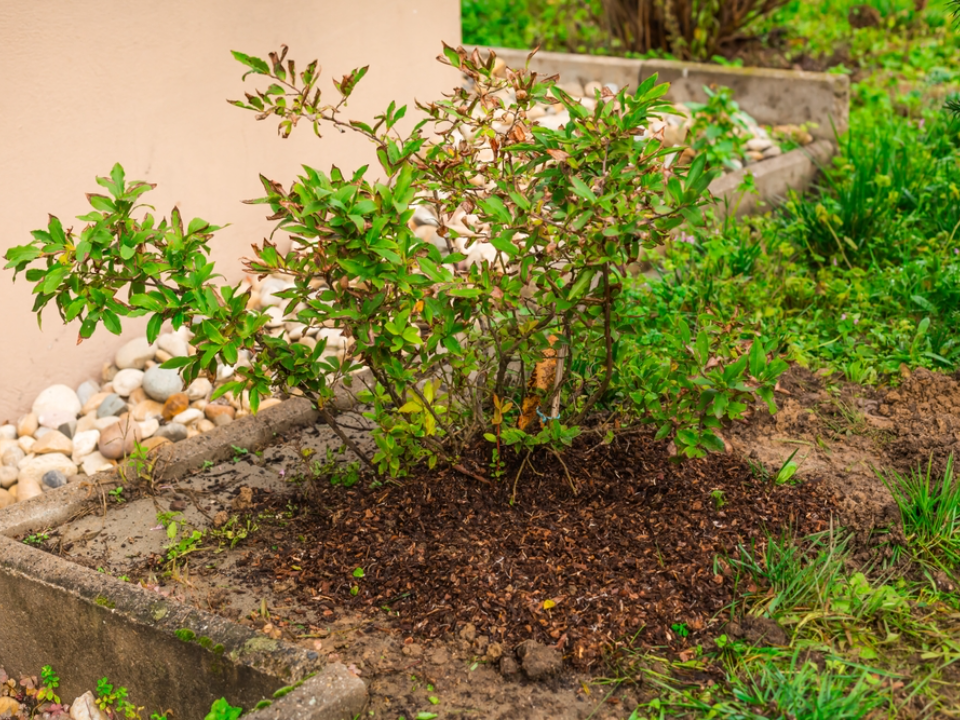
Mulching is an essential fall gardening practice, especially in smaller spaces. Applying a layer of mulch helps retain moisture in the soil, which is crucial as the air becomes drier. It also serves as insulation, protecting the roots of plants from the chill of the fall nights and preventing frost from reaching the roots.
Organic mulches like shredded leaves, wood chips, or straw are ideal for fall gardening. They not only help in conserving moisture but also enrich the soil as they break down over time. Mulching around your plants creates a healthier and more sustainable growing environment.
Maximize Raised Garden Beds
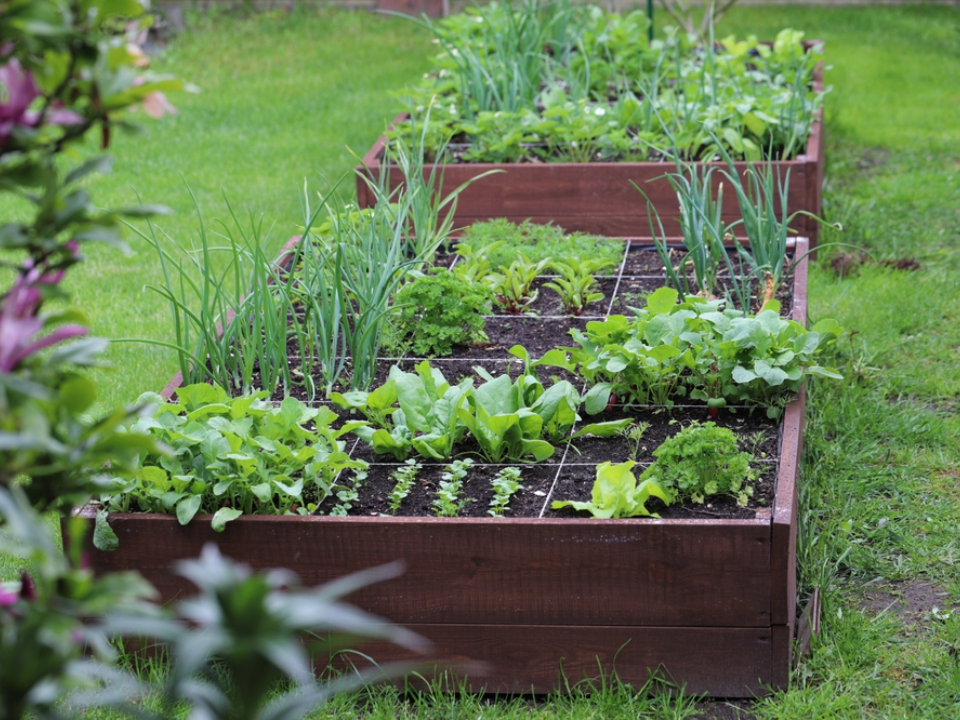
Raised garden beds are an excellent choice for small spaces and patios because they allow you to control the soil quality, drainage, and plant spacing. Raised beds can be built in a variety of materials, such as wood, brick, or metal, and they are perfect for growing vegetables, herbs, and flowers that need well-drained soil.
Since the soil in raised beds warms up faster in spring and cools down slower in fall, they are ideal for extending your growing season. Additionally, raised beds reduce the need for bending or kneeling, making gardening easier for those with mobility concerns.
Choose Low-Maintenance Plants
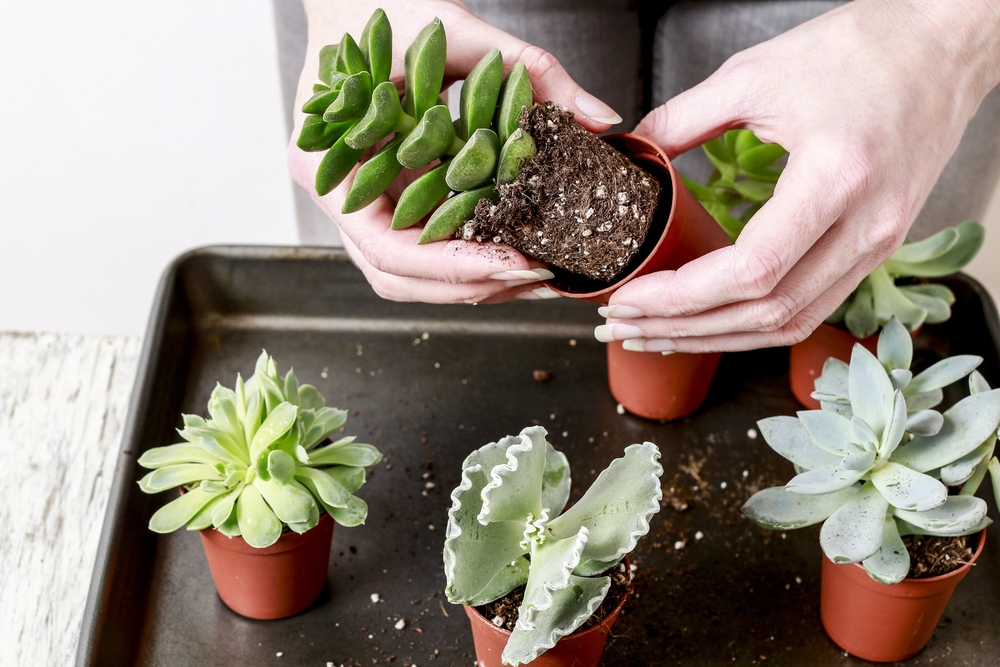
For those with limited time or small garden spaces, low-maintenance plants are a great choice. Plants like lavender, sedum, and succulents require minimal attention but still offer beauty and fragrance. These plants are perfect for fall, as they can tolerate the changing weather conditions without constant care.
Low-maintenance plants also help keep your garden looking good without the need for frequent pruning or watering. Their resilience to the elements makes them an ideal option for gardeners with busy lifestyles or those new to gardening.
Grow Fall-Friendly Grasses
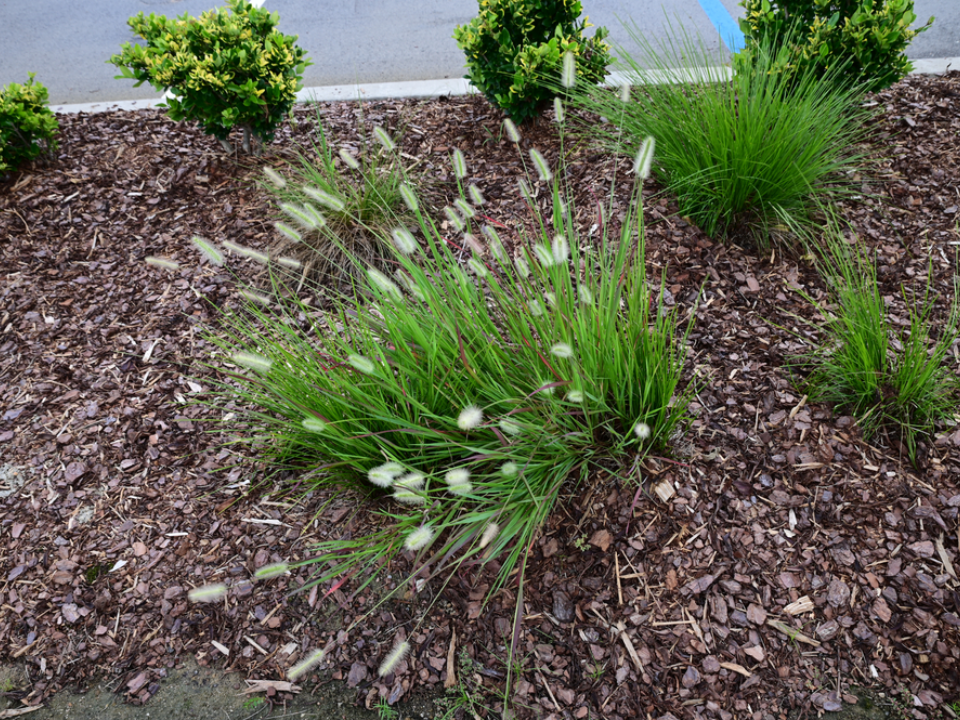
Ornamental grasses are a fantastic addition to a small fall garden. These grasses, like feather reed grass and fountain grass, provide texture and movement in your garden, adding visual interest throughout the fall season. They are also hardy, meaning they can survive colder temperatures and will continue to grow with minimal effort.
Planting ornamental grasses in containers or along the edges of your patio creates a beautiful border that complements other fall plantings. These grasses require little maintenance, making them perfect for small space gardeners.
Plan for Seasonal Containers
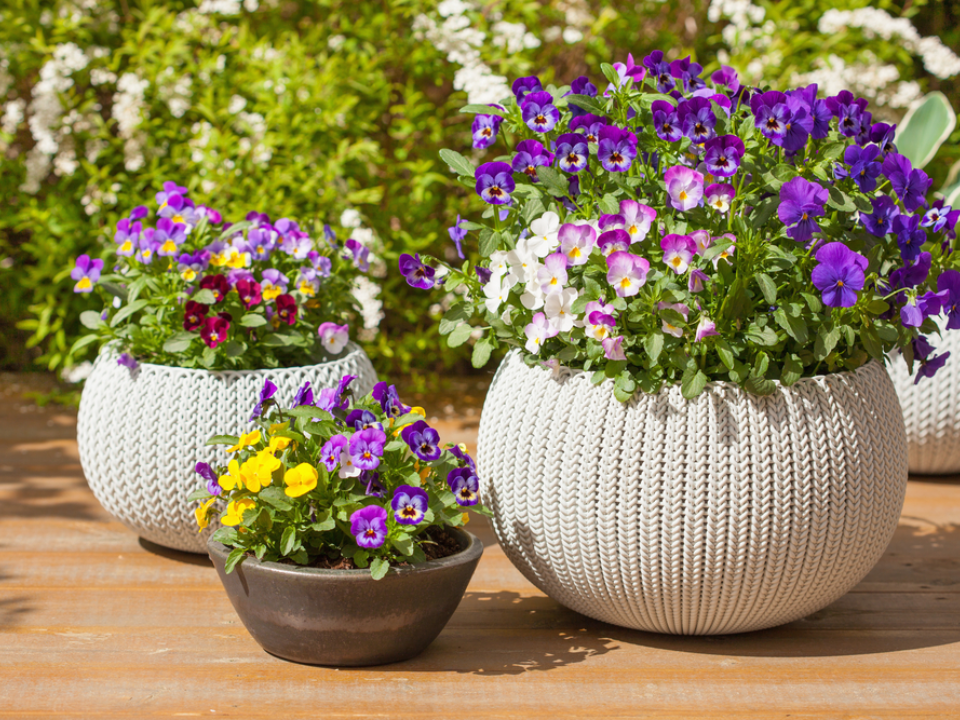
Seasonal container gardening is a great way to change up your patio or small garden every few months. In the fall, consider planting containers with seasonal flowers such as pansies, mums, or ornamental kale. These flowers add vibrant color and texture to your space, making it feel warm and inviting even as the temperatures drop.
You can also experiment with different color combinations and plant groupings to create unique arrangements. Using pots of various sizes and shapes allows you to be creative and personalize your small garden, even if it’s only on a patio or balcony.
Incorporate Fall Decorations
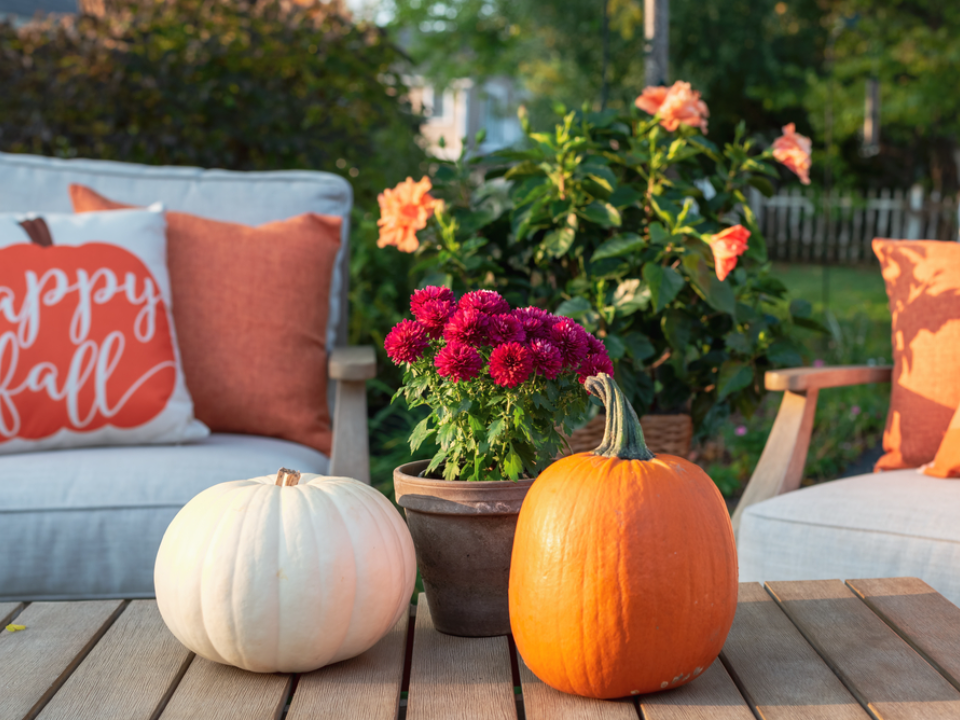
Decorating your patio with seasonal items can help create a cozy atmosphere as the weather cools. Think about adding pumpkins, decorative gourds, and autumn wreaths to your space. These items can be arranged on tables, in window boxes, or along pathways to add charm to your garden while complementing the fall plants you have growing.
Along with seasonal decorations, consider adding outdoor lighting such as string lights or lanterns to extend the time you can spend outdoors as the evenings become darker earlier. These small touches can make your small patio feel warm and inviting during the fall months.
This article originally appeared on Avocadu.
